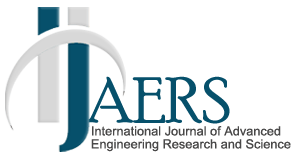Spatio-temporal analysis of the vulnerability of typhoid fever in the municipality of Belém, Pará, Brazil |
| ( Vol-9,Issue-10,October 2022 ) OPEN ACCESS |
| Author(s): |
Giselly de Lourdes da Silva Santana, Karla de Souza Santos, Ricardo José de Paula Souza e Guimarães, Cléa Nazaré Carneiro Bichara |
| Keywords: |
|
Bacterial diseases. DRSAI. Spatial distribution. Spatial epidemiology. Waterborne diseases. |
| Abstract: |
|
The study sought to analyze the sociodemographic, epidemiological profile, and spatial-temporal distribution of typhoid fever in the municipality of Belém, Pará. For that, we used the confirmed cases of the disease obtained from SINAN by SESPA from 2007 to 2016. The data was categorized based on the sociodemographic, epidemiological profile, incidence rates, and monthly variation. For spatial distribution, we used the Kernel Density Estimator and the Buffer technique. Thus, we obtained 152 confirmed cases, with a higher proportion in males (67.76%), in the age group between 30 and 59 years (48.03%), and with high school education (19.08%). The transmission was mainly related to the ingestion of contaminated water and food (11.18%), with resolution at an outpatient level (69.08%), confirmed at a laboratory level (93.42%), without death records. The annual incidence rate varied from 0.07% in 2011 to 3.28% in 2014. It was also observed that the spatial distribution of the disease was concentrated in the districts of Guamá, Entroncamento, and near the Tucunduba watershed demonstrating that the greatest risk of transmission is in areas that present socioeconomic fragility and are precarious in basic sanitation. Thus there is a need for investments in sanitary infrastructure and health surveillance actions, aiming at reducing the disease in the municipality. |
| Article Info: |
|
Received: 08 Sep 2022, Received in revised form: 01 Oct 2022, Accepted: 05 Oct 2022, Available online: 11 Oct 2022 |
|
|
| Paper Statistics: |
| Cite this Article: |
| Click here to get all Styles of Citation using DOI of the article. |
- Track Your Paper
- editor.ijaers@gmail.com
- ISSN : 2349-6495(P) | 2456-1908(O)



Advanced Engineering Research and Science